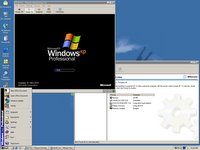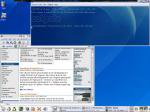Fight comment spam, earn cash!
 You have certainly seen comments on websites or blogs like these before:
You have certainly seen comments on websites or blogs like these before:"I found your website by accident and really like it. Please also visit my site, where you can get free [anything], please click here http://mycoolwebsite.com/..."Many people already got used to deleting spam comments from their blogs or even totally disabled the comment feature. This weekend I read about an approach from a german blogger which I'd like to share with the english-speaking communuity.
One year ago, he added the following line just before the SUBMIT button in the comment area:
"Dear spammers, advertising comments will cost you € 1400 a month".
Wow... he was probably inspired by the can deposit system in Germany. They don't want you to buy Coke in cans, so there is an extra charge of 25 cent per can, that you get back if you return the can. Almost nobody does it, so now Coke cans have almost disappeared from the shops. You change things if it pays off to people or if they have expenses if they act inapropriate. Martin (the german blogger) didn't intend to make money from it, he just wanted to have clean blog comments. For each spam comment he sent a bill to the owner of the linked website, and suddenly a bunch of scared spammers let him know through their lawyers that it wasn't them who posted the comment etc. So he scared away some of the spammers, some at least had to pay their lawyers and some simply apologized and promised not to spam his blog anymore.
Now after one year Martin removed the line from the comment box. I translated his post for you:
reason ONE: too many people copied my idea without thinking about it. Some even contacted me and asked for tips and legal advice on how to they could scare spammers out of fun. I wanted to make the world better, not worse.
reason TWO - and this one is the important one: I got to know a lot of spammers. They can be divided into two categories:I am sorry if my translation was maybe not 100%, but I hope you get the point.
But I only wanted to explain, why I am not sending bills anymore. Voilá, here's the answer: it doesn't help. That means - like I wrote: with professional spammers it doesn't help much. But I am really sorry for the impact on small business makers who don't know better and have problems enough already and shouldn't be bothered by angry bill-sending blogwriters.
- the industrial spammers create hundreds of automated comments in a second from different IP addresses, sometimes hundreds of comments per day. They are mostly located overseas, my bills would have been useless.
- professional spammers are smart ass mafiosi, act alone but are part of a network and post comments by hand supported by half automatic scripts. If they are located in the local market (Germany), the bills worked (but they knew their rights and sent letters of objection). Most of all the line itself ("you have to pay for spam comments") worked and scared away many. We need to fight those kind of people, unfortunately they almost don't show up at my site anymore.
- the self made man spammers. I can't explain the reason, only describe what I'm seeing: more and more I get to know people that run their own websites and try to make money from it, often supported by Google Adsense. Most of them live off that business and the stories they're telling me cause me pain in my heart. They started it from an emergency situation, often because their unemployment insurance wouldn't pay anymore, no chance for a real job, and [...] being their own boss was the only hope to get some money. They only have limited or almost no clue about the internet or even the communicative processes inside it, they just heard that "you need links for your business to work"[...]
I think you could try fighting professional comment spam by transforming a comment box into a place where you start something like a contract with the person commenting, at least for the local market:
- Use Captcha's to prevent comments placed by robots and ensure that a human being wrote the lines
- state clearly that you charge for spam comments, but make sure normal people are not irritated by that and are happy to leave their 2 cents on your page
- have the user type "I AGREE" in a blank field, otherwise you wouldn't accept the comment
Be good, don't harm surfers!
image by opticallyactive, used unter cc license.
technorati tags: commentspam, spam, blogging, antispam






